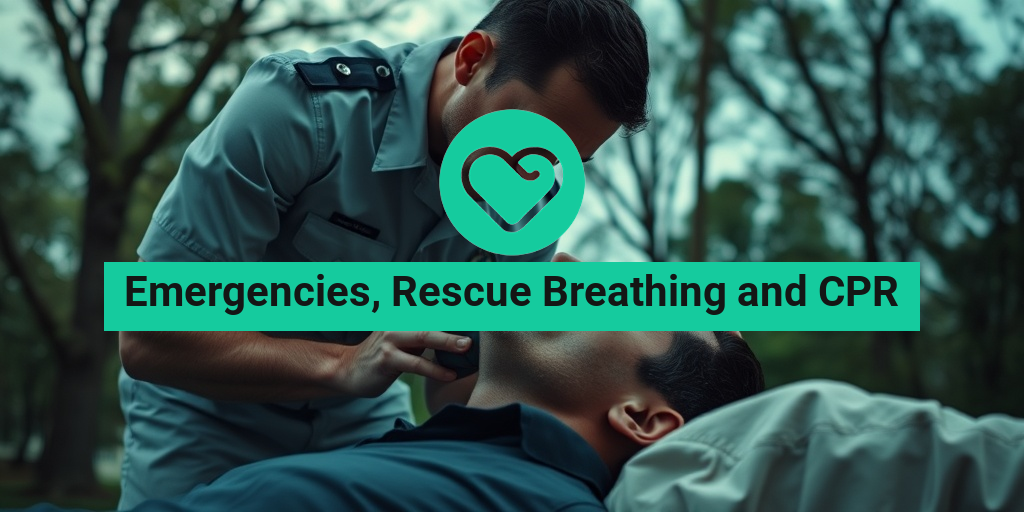Understanding Emergencies
Emergencies can strike at any moment, often leaving individuals feeling overwhelmed and unsure of how to respond. Whether it’s a medical crisis, a natural disaster, or an accident, understanding the nature of emergencies is crucial for effective response and recovery. In this section, we will explore what constitutes an emergency, the importance of preparedness, and how to stay calm in high-pressure situations.
What Constitutes an Emergency?
An emergency is typically defined as a situation that poses an immediate risk to health, life, property, or the environment. Common examples include:
- Medical Emergencies: Heart attacks, strokes, severe injuries, or allergic reactions.
- Natural Disasters: Earthquakes, floods, hurricanes, or wildfires.
- Accidents: Car crashes, falls, or workplace incidents.
Recognizing the signs of an emergency is the first step in ensuring a prompt and effective response. For instance, if someone is unconscious or not breathing, immediate action is required.
The Importance of Preparedness
Being prepared for emergencies can significantly reduce panic and improve outcomes. Here are some key steps to consider:
- Educate Yourself: Learn about common emergencies and how to respond to them.
- Have a Plan: Create an emergency plan for your family or workplace, including escape routes and communication strategies.
- Gather Supplies: Keep a well-stocked emergency kit that includes first aid supplies, food, water, and other essentials.
Preparedness not only helps you respond effectively but also instills confidence in your ability to handle crises. Remember, knowledge is power! 💪
Staying Calm in High-Pressure Situations
In the heat of an emergency, staying calm is vital. Here are some tips to help you maintain composure:
- Take Deep Breaths: Deep breathing can help reduce anxiety and clear your mind.
- Focus on the Task: Concentrate on what needs to be done rather than the chaos around you.
- Seek Help: Don’t hesitate to call for assistance or delegate tasks to others if possible.
By understanding emergencies and preparing for them, you can make a significant difference in the outcome of a crisis. For more information on emergency preparedness and response, consider visiting Yesil Health AI for evidence-based health answers.
What Is Rescue Breathing?
Rescue breathing is a critical lifesaving technique used in emergencies when someone is not breathing or is breathing inadequately. It involves providing breaths to a person who cannot breathe on their own, ensuring that oxygen reaches their lungs and vital organs. Understanding how to perform rescue breathing can be the difference between life and death in a critical situation.
When Is Rescue Breathing Necessary?
Rescue breathing is typically required in situations such as:
- Cardiac Arrest: When the heart stops beating, and the person is unresponsive.
- Choking: If an object blocks the airway, leading to a lack of oxygen.
- Near Drowning: When someone has inhaled water and is unable to breathe.
Recognizing these scenarios is essential for timely intervention. If you suspect someone is not breathing, it’s crucial to act quickly.
How to Perform Rescue Breathing
Here’s a step-by-step guide on how to perform rescue breathing:
- Check Responsiveness: Tap the person and shout to see if they respond.
- Call for Help: If there’s no response, call emergency services immediately.
- Open the Airway: Tilt the head back slightly and lift the chin to open the airway.
- Give Breaths: Pinch the nose shut, cover the person’s mouth with yours, and give two breaths, each lasting about one second. Watch for the chest to rise.
- Continue CPR: If there’s no pulse, continue with chest compressions and rescue breaths in a cycle.
It’s important to remember that rescue breathing should be performed with caution, especially in cases of suspected infectious diseases. Always prioritize your safety and the safety of others.
Conclusion
Understanding emergencies and knowing how to perform rescue breathing are essential skills that can save lives. By being prepared and educated, you can respond effectively in critical situations. For more detailed information on emergencies, rescue breathing, and CPR, visit Yesil Health AI, your go-to resource for evidence-based health answers. Together, we can make a difference in emergency preparedness! 🌟
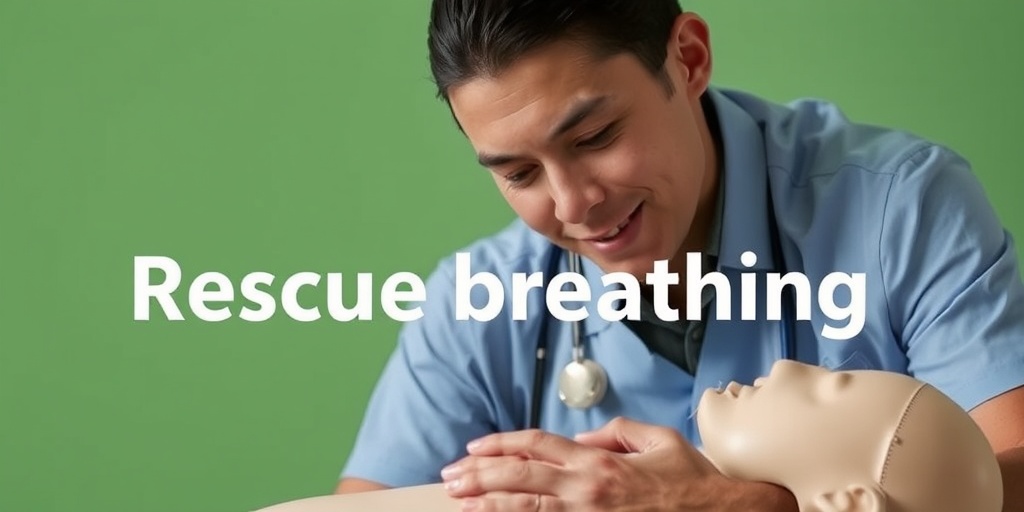
When to Use CPR
Cardiopulmonary resuscitation (CPR) is a lifesaving technique that can be crucial in emergencies where someone’s heart has stopped beating or they are not breathing. Understanding when to use CPR can make the difference between life and death. Here are some key scenarios where CPR is necessary:
Recognizing Cardiac Arrest
Cardiac arrest occurs when the heart suddenly stops beating, leading to a lack of blood flow to the brain and other vital organs. Signs of cardiac arrest include:
- Unresponsiveness: The person does not respond to verbal or physical stimuli.
- No Breathing: The individual is not breathing or is only gasping.
- Pale or Bluish Skin: The skin may appear pale or have a bluish tint, especially around the lips and fingertips.
If you observe any of these signs, it’s critical to act quickly. Call emergency services immediately and begin CPR without delay. ⏱️
Situations Requiring CPR
CPR should be administered in various emergency situations, including:
- Heart Attack: If someone is experiencing chest pain, shortness of breath, or discomfort in the arms, back, neck, or jaw, they may be having a heart attack, which can lead to cardiac arrest.
- Drowning: If a person has been submerged in water and is unresponsive, CPR can help restore breathing and circulation.
- Choking: If someone is choking and becomes unresponsive, CPR can help expel the obstruction and restore breathing.
- Severe Trauma: In cases of severe injury, such as from a car accident, CPR may be necessary if the person is unresponsive and not breathing.
Always remember, if you are unsure whether to perform CPR, it is better to act than to hesitate. Your actions could save a life! 💓
CPR Steps Explained
Knowing how to perform CPR correctly is essential. Here’s a step-by-step guide to help you through the process:
Step 1: Assess the Situation
Before you begin CPR, ensure the scene is safe for both you and the victim. Check for responsiveness by gently shaking the person and shouting, “Are you okay?” If there’s no response, call emergency services immediately or ask someone else to do so.
Step 2: Position the Person
Carefully roll the person onto their back on a firm, flat surface. This position is crucial for effective chest compressions.
Step 3: Start Chest Compressions
Place the heel of one hand on the center of the person’s chest, then place your other hand on top and interlock your fingers. Keep your arms straight and use your body weight to compress the chest downwards at least 2 inches deep at a rate of 100 to 120 compressions per minute. Aim for a rhythm similar to the song “Stayin’ Alive” by the Bee Gees. 🎶
Step 4: Give Rescue Breaths
After 30 compressions, it’s time to give rescue breaths:
- Open the Airway: Tilt the person’s head back slightly and lift the chin to open the airway.
- Pinch the Nose: Pinch the person’s nose shut and cover their mouth with yours, creating a seal.
- Give Breaths: Deliver two breaths, each lasting about 1 second, ensuring the chest rises visibly.
Continue the cycle of 30 chest compressions followed by 2 rescue breaths until emergency help arrives or the person shows signs of life, such as breathing or movement.
Important Considerations
While performing CPR, keep the following in mind:
- Don’t Stop: Continue CPR until professional help arrives or the person starts breathing on their own.
- Use an AED: If available, use an Automated External Defibrillator (AED) as soon as possible. It can significantly increase the chances of survival.
- Stay Calm: Your composure can help you perform CPR effectively and reassure bystanders.
Learning CPR and rescue breathing can empower you to act decisively in emergencies. Consider taking a certified CPR course to enhance your skills and confidence! 🏥
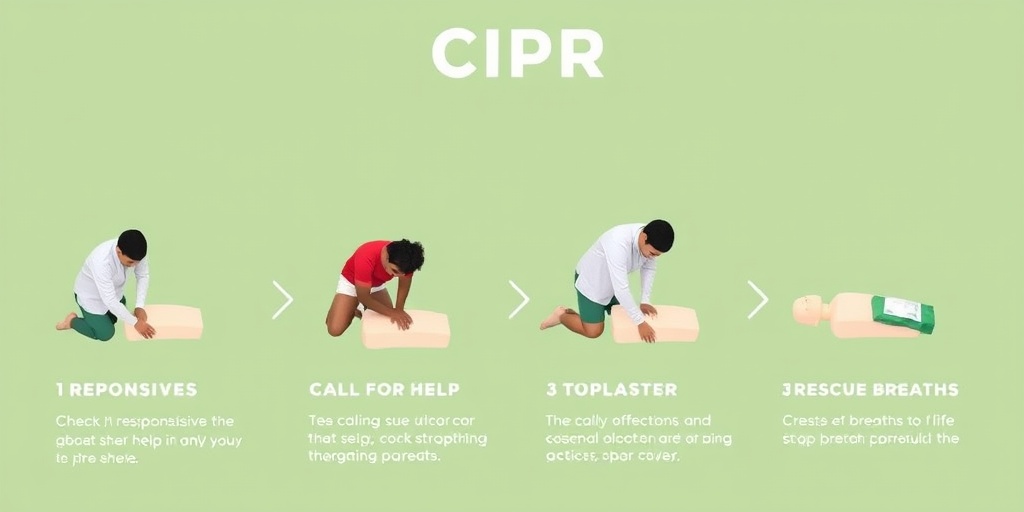
Rescue Breathing Techniques
When it comes to emergencies, knowing how to perform rescue breathing can be a lifesaver. This technique is crucial for providing oxygen to someone who is not breathing or whose breathing is inadequate. Here, we’ll explore the steps involved in rescue breathing, the importance of this skill, and some tips to ensure you do it effectively.
What is Rescue Breathing?
Rescue breathing is a method used to supply air to a person who is not breathing on their own. It is often performed in conjunction with CPR (Cardiopulmonary Resuscitation) when someone has suffered a cardiac arrest or respiratory failure. The goal is to maintain oxygen flow to the brain and vital organs until professional help arrives.
Steps for Performing Rescue Breathing
Here’s a step-by-step guide on how to perform rescue breathing:
- Check Responsiveness: Gently shake the person and shout, “Are you okay?” If there’s no response, call for emergency help immediately.
- Open the Airway: Tilt the head back slightly by placing one hand on the forehead and using the other hand to lift the chin. This helps to open the airway.
- Check for Breathing: Look, listen, and feel for breathing for no more than 10 seconds. If the person is not breathing or only gasping, proceed to the next step.
- Give Rescue Breaths: Pinch the nose shut, take a normal breath, seal your lips around the person’s mouth, and give two breaths, each lasting about one second. Watch for the chest to rise as you breathe into the person.
- Continue CPR: After giving two rescue breaths, begin chest compressions if the person is still unresponsive and not breathing. Alternate between 30 compressions and 2 rescue breaths.
Important Tips for Effective Rescue Breathing
- Seal the Mouth: Ensure a good seal around the mouth to prevent air from escaping.
- Monitor the Chest: Always watch for the chest to rise and fall with each breath.
- Stay Calm: Keeping a calm demeanor can help you think clearly and act effectively during an emergency.
Practicing these techniques can make a significant difference in an emergency situation. Remember, the sooner you act, the better the chances of survival for the person in need. 🩺
Common CPR Myths
Despite the importance of CPR (Cardiopulmonary Resuscitation) in saving lives, there are many misconceptions surrounding this life-saving technique. Understanding the truth behind these myths can empower you to act confidently in emergencies. Let’s debunk some of the most common CPR myths.
Myth 1: CPR is Only for Trained Professionals
One of the biggest misconceptions is that only trained professionals can perform CPR. In reality, anyone can learn and perform CPR. Basic CPR training is widely available and can be learned by anyone, regardless of their background. In an emergency, your actions can make a significant difference, even if you are not a medical professional.
Myth 2: You Should Only Perform CPR if You Are Sure the Person is Unconscious
Another common myth is that you should only perform CPR if you are certain the person is unconscious. In fact, if someone is unresponsive and not breathing normally, it’s crucial to start CPR immediately. Time is of the essence, and every second counts in a life-threatening situation.
Myth 3: You Can Hurt Someone by Performing CPR
Many people hesitate to perform CPR because they fear they might hurt the person. While it’s true that CPR can cause some injuries, the risk of not performing it is far greater. In a cardiac arrest situation, the person’s chances of survival decrease significantly without immediate intervention. It’s better to take action than to do nothing at all.
Myth 4: You Should Only Use Rescue Breathing in CPR
Some believe that rescue breathing is the only method to use during CPR. However, the current guidelines recommend a combination of chest compressions and rescue breaths. For adults, hands-only CPR (chest compressions without rescue breaths) is often encouraged, but for children and infants, rescue breaths are essential. Understanding the appropriate technique for different age groups is vital.
Myth 5: CPR is Always Effective
While CPR can significantly increase the chances of survival, it is not a guaranteed solution. The effectiveness of CPR depends on various factors, including the promptness of the response, the underlying cause of the cardiac arrest, and the overall health of the individual. However, performing CPR can buy critical time until emergency services arrive.
By debunking these myths, we can encourage more people to learn CPR and be prepared to act in emergencies. Remember, knowledge is power, and being equipped with the right information can save lives! 💪❤️
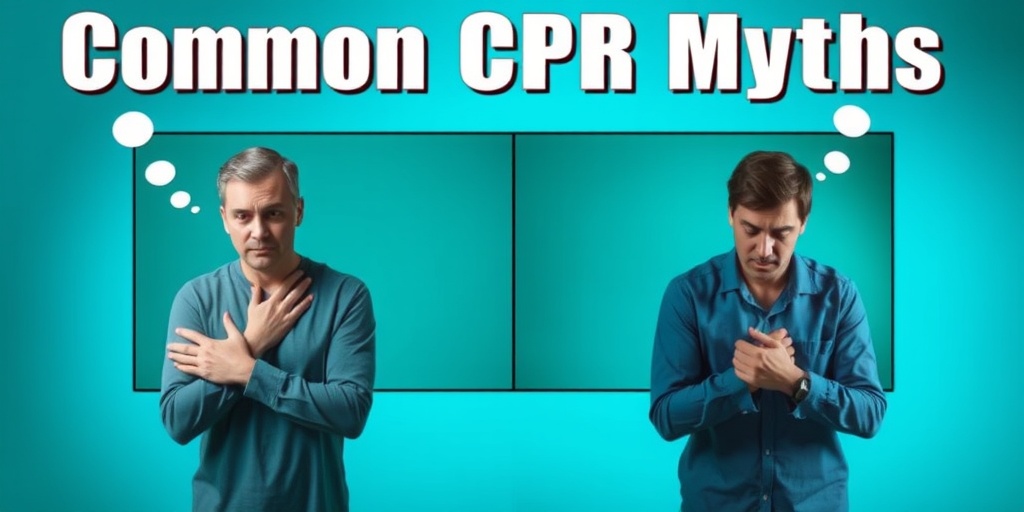
CPR for Children and Infants
Cardiopulmonary resuscitation (CPR) is a lifesaving technique that can be crucial in emergencies, especially when it comes to children and infants. Understanding how to perform CPR on these vulnerable populations is essential for parents, caregivers, and anyone who may find themselves in a situation where a child needs help.
Why CPR for Children and Infants is Different
Performing CPR on children and infants differs significantly from adults due to their smaller size and unique physiological characteristics. Here are some key differences:
- Compression Depth: For infants, compressions should be about 1.5 inches deep, while for children, it should be about 2 inches. This is crucial to ensure effective blood circulation.
- Compression Technique: Use two fingers for infants and one hand for children when delivering chest compressions. This helps to apply the right amount of pressure without causing injury.
- Breath-to-Compression Ratio: The recommended ratio for infants and children is 30 compressions followed by 2 rescue breaths, similar to adults, but the technique for delivering breaths is gentler.
Steps to Perform CPR on Infants
Here’s a step-by-step guide on how to perform CPR on infants:
- Check Responsiveness: Gently tap the infant and shout to see if they respond.
- Call for Help: If there’s no response, call emergency services immediately.
- Open the Airway: Place the infant on their back and tilt the head back slightly to open the airway.
- Check for Breathing: Look, listen, and feel for breathing for no more than 10 seconds.
- Begin Compressions: Place two fingers in the center of the chest and push down at a rate of 100-120 compressions per minute.
- Give Rescue Breaths: After 30 compressions, give 2 gentle breaths, ensuring the chest rises.
Steps to Perform CPR on Children
For children aged 1 year to puberty, follow these steps:
- Check Responsiveness: Tap the child and shout to see if they respond.
- Call for Help: If unresponsive, call emergency services.
- Open the Airway: Tilt the head back slightly to open the airway.
- Check for Breathing: Look, listen, and feel for breathing for no more than 10 seconds.
- Begin Compressions: Use one hand for compressions in the center of the chest, pushing down about 2 inches deep.
- Give Rescue Breaths: After 30 compressions, give 2 breaths, ensuring the chest rises.
Importance of CPR Training
Understanding the importance of CPR training cannot be overstated. Being equipped with the knowledge and skills to perform CPR can make a significant difference in emergency situations. Here’s why CPR training is vital:
1. Saves Lives
CPR can double or even triple a person’s chance of survival after cardiac arrest. The sooner CPR is initiated, the better the chances of survival. With proper training, you can act quickly and confidently in emergencies.
2. Increases Awareness
CPR training raises awareness about the signs of cardiac arrest and other emergencies. Participants learn to recognize when someone needs help, which can lead to faster response times and better outcomes.
3. Builds Confidence
Many people hesitate to act in emergencies due to fear or uncertainty. CPR training provides hands-on practice, helping individuals feel more confident in their ability to perform lifesaving techniques when it matters most.
4. Community Preparedness
When more people in a community are trained in CPR, the overall safety and preparedness of that community increase. This collective knowledge can lead to quicker responses and better survival rates in emergencies.
5. Encourages a Culture of Safety
By promoting CPR training, communities foster a culture of safety and responsibility. This encourages individuals to take proactive steps in learning lifesaving skills, ultimately benefiting everyone.
In conclusion, being trained in CPR for children and infants is not just a skill; it’s a responsibility. The ability to perform CPR can mean the difference between life and death in critical situations. Whether you’re a parent, teacher, or caregiver, investing time in CPR training is a decision that can save lives. 🩺❤️
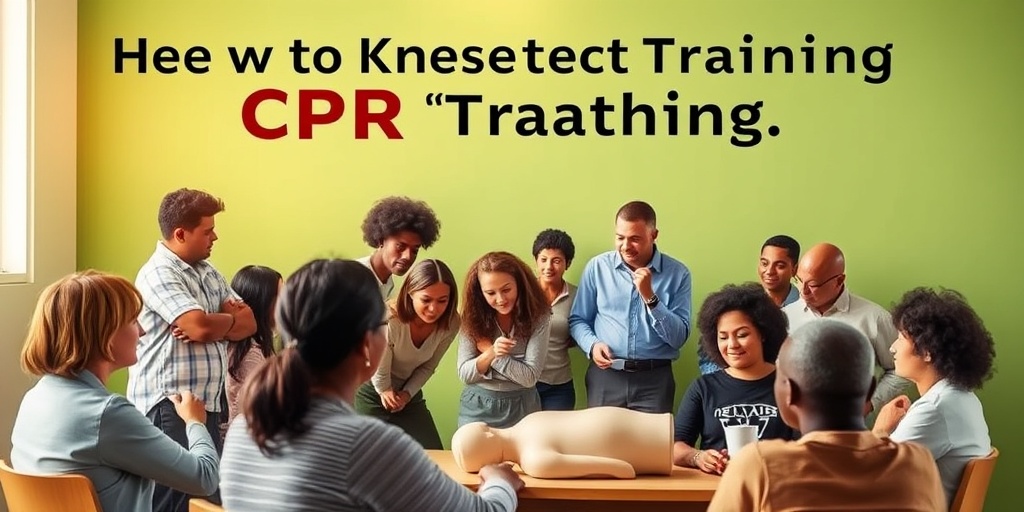
Frequently Asked Questions about Emergencies, Rescue Breathing and CPR
What is the difference between CPR and rescue breathing?
CPR (Cardiopulmonary Resuscitation) is a lifesaving technique used in emergencies when someone’s breathing or heartbeat has stopped. It combines chest compressions and rescue breathing. Rescue breathing, on the other hand, involves providing breaths to someone who is not breathing but still has a heartbeat.
When should I perform CPR?
You should perform CPR when a person is unresponsive and not breathing or only gasping. It’s crucial to act quickly, as every second counts in emergencies.
How do I perform rescue breathing?
To perform rescue breathing, follow these steps:
- Ensure the airway is clear.
- Pinch the nose shut and cover the person’s mouth with yours.
- Give two breaths, each lasting about one second, and watch for the chest to rise.
- Continue with CPR if there is no response.
Can I perform CPR on a child or infant?
Yes, you can perform CPR on children and infants, but the technique differs slightly. For infants, use two fingers for chest compressions and provide gentle breaths. For children, use one hand for compressions and ensure the breaths are appropriate for their size.
Is it safe to perform CPR on someone?
Yes, it is safe to perform CPR on someone in need. Good Samaritan laws protect individuals who provide assistance in emergencies, as long as they act in good faith and without negligence.
How can I learn CPR and rescue breathing?
You can learn CPR and rescue breathing through certified courses offered by organizations such as the American Heart Association or the Red Cross. These courses provide hands-on training and valuable knowledge for emergencies.
What should I do if I am unsure about performing CPR?
If you are unsure about performing CPR, call emergency services immediately. They can guide you through the process over the phone until help arrives. Remember, it’s better to attempt assistance than to do nothing at all! 📞
How often should I refresh my CPR skills?
It is recommended to refresh your CPR skills every two years. Regular training ensures that you stay updated on the latest techniques and guidelines for emergencies.

